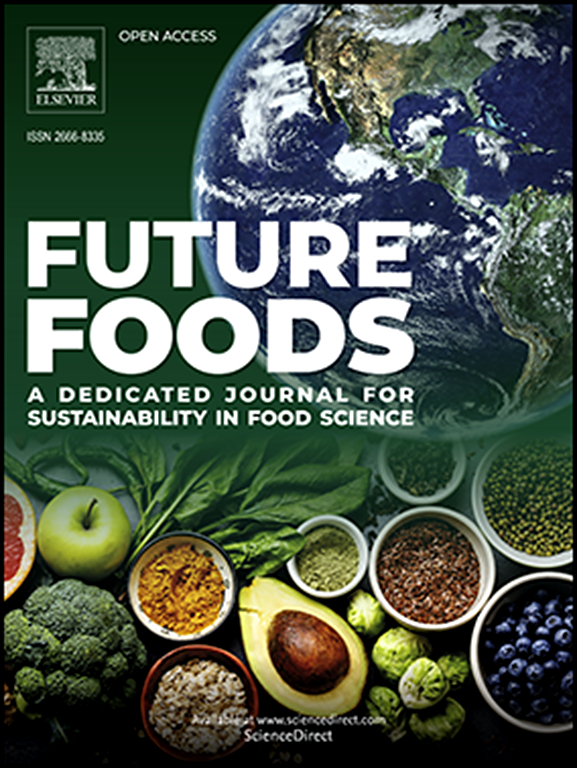Extraction of Protein-Enriched Fractions from Sunflower and Hemp Seeds: Composition and Colloidal Stability of Less Refined Fractions as a Function of Initial pH
IF 7.2
Q1 FOOD SCIENCE & TECHNOLOGY
引用次数: 0
Abstract
Simultaneous extraction of oil and protein from oilseeds using aqueous extraction yields protein concentrates with less refined compositions. This work evaluated the effect of initial extraction pH on the composition, yield, and physicochemical properties of colloidal components extracted from hemp and sunflower seeds. Understanding these differences is crucial for implementation of these novel practices as a sustainable alternative to the current practices.
Results showed no general trend in protein yield and purity as a function of pH for the two seeds. For sunflower seeds, the highest protein recovery (52 %) and purity (55 % dm) were achieved under alkaline conditions. In contrast, hemp seeds showed 30 % protein recovery and 42 % purity, with only yields depending on extraction pH. For both oilseeds, extraction pH influenced the colloidal assemblies of oleosomes and proteins, as shown by light scattering and confocal microscopy. These variations were attributed to compositional differences between the two seeds, leading to different interactions among the soluble carbohydrates, proteins, and oleosomes. These findings demonstrate that improving fractionation efficiency between proteins and oleosomes requires a better understanding of biomacromolecule interactions and their resulting functional colloidal structures, before full adoption of these new, less refined ingredients in food formulations.

求助全文
约1分钟内获得全文
求助全文
来源期刊

Future Foods
Agricultural and Biological Sciences-Food Science
CiteScore
8.60
自引率
0.00%
发文量
97
审稿时长
15 weeks
期刊介绍:
Future Foods is a specialized journal that is dedicated to tackling the challenges posed by climate change and the need for sustainability in the realm of food production. The journal recognizes the imperative to transform current food manufacturing and consumption practices to meet the dietary needs of a burgeoning global population while simultaneously curbing environmental degradation.
The mission of Future Foods is to disseminate research that aligns with the goal of fostering the development of innovative technologies and alternative food sources to establish more sustainable food systems. The journal is committed to publishing high-quality, peer-reviewed articles that contribute to the advancement of sustainable food practices.
Abstracting and indexing:
Scopus
Directory of Open Access Journals (DOAJ)
Emerging Sources Citation Index (ESCI)
SCImago Journal Rank (SJR)
SNIP
 求助内容:
求助内容: 应助结果提醒方式:
应助结果提醒方式:


